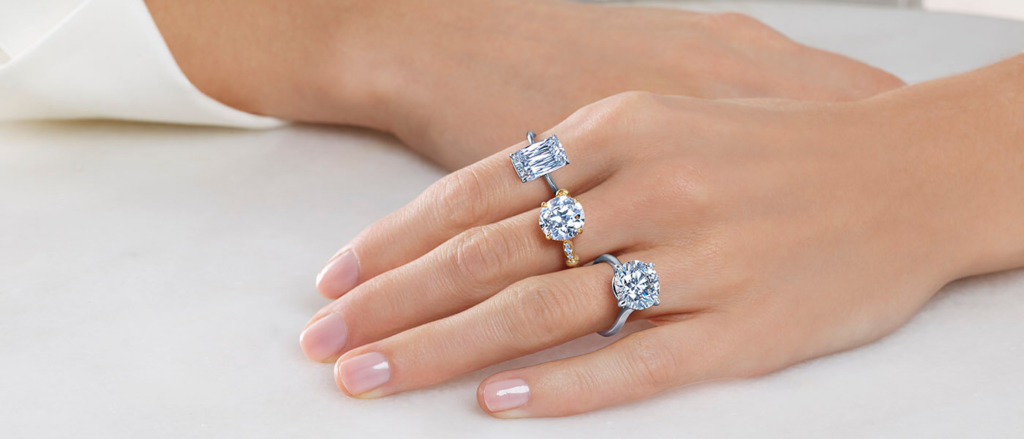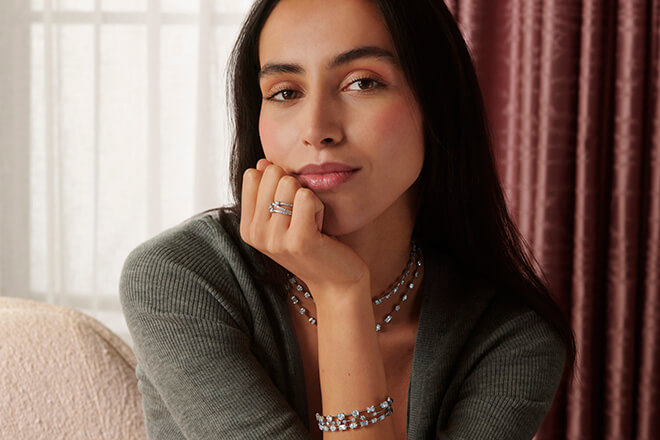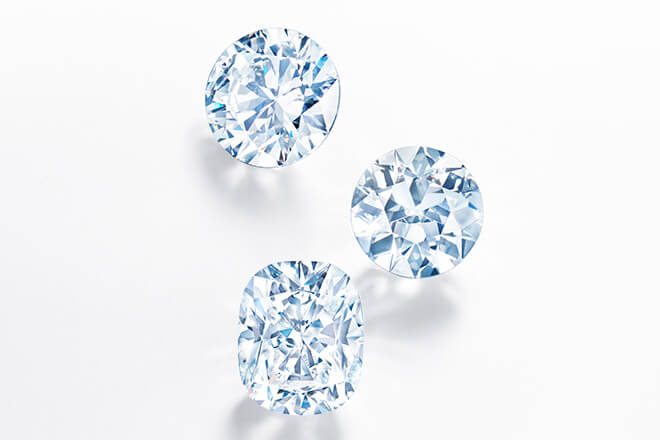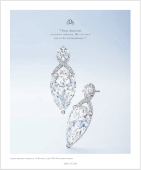Perhaps you can’t find the engagement ring you’ve always envisioned. Or you want a truly unique ring to symbolize your lifelong commitment. No matter the reason, creating your own engagement ring is a meaningful experience for many soon-to-be brides and grooms. Still, you might find the prospect of designing and creating your own engagement ring daunting.
In truth, the process isn’t so difficult. Many professional jewelers offer custom designs or can refer you to someone that does. However, before you dive in, it’s important to consider these questions:
- Do you have a jeweler in mind?
- What is your ideal time frame for creating a customized ring?
- Do you expect to view the ring before purchase?
- Will the jeweler be able to make any modifications before finalizing it?
- How would you prefer to design your ring—by meeting with an expert in person or through video calls? Or would you rather do it all yourself with an online tool?
Having a sense of these answers will make it easier to bring your dream ring to life.
Custom Engagement Rings: A Unique Keepsake
A custom-designed engagement ring offers a special opportunity to honor your love and relationship. You’ll have the freedom to choose between a classic diamond or a non-traditional colored gemstone, as well as the stone’s cut and setting. In addition, you can even design your wedding ring to match.

You may have noticed celebrities with all kinds of engagement ring styles—not any you might see at your local jeweler’s. For instance, Gwyneth Paltrow sports a custom ring with a large round-cut sapphire. Halle Berry’s features a 4-carat emerald on an engraved band. And Emily Ratajkowski’s gold band features not one but two diamonds: a square princess-cut stone as well as a pear-shaped one.
Fortunately, customized rings aren’t only for the rich and famous. With Kwiat, you can create a unique and sophisticated engagement ring that aligns with your budget.
Important Design Decisions
There are three important decisions you’ll need to make as you design your ring: the metal; gemstone; and setting.
METAL
First consider the type of precious metal you’d like. Color isn’t the only differentiating factor; there’s also cost and durability. Here are three popular choices:
- Yellow gold has long been used for all types of jewelry, particularly wedding and engagement rings. Compared to rose and white gold, it’s more hypoallergenic and the easiest type of gold to maintain.
- Platinum is a white, highly prized metal. Its high density makes it exceptionally durable, perfect for keeping precious stones securely in place. Compared to gold, it’s heavier and more expensive, but it’s hypoallergenic and maintains its color over time.
- Rose gold, also known as pink gold, gets its pink hue from mixing pure gold with copper and silver alloys. Thanks to its copper content, it’s more durable than white and yellow gold.
STONE
Next, you’ll select a stone for your ring, as well as its shape and cut. While shape refers to a gemstone’s outline, cut describes its facets and angles — the qualities that determine a gemstone’s symmetry and brilliance.
Many gemstone sizes, shapes, and cuts exist, giving you a wide range of price options. Some jewelers might even offer patented or trademarked cuts that aren’t widely available. For instance, the Kwiat Round™, Kwiat Cushion™, Fred Leighton Round™, and ASHOKA® diamonds are unique to Kwiat.
Since there are many misconceptions about diamonds and gemstones, it’s important that you work with a professional and trusted jeweler who can provide honest guidance.
SETTING
Finally, how do you want your gemstone set in your ring? The ring setting is important for securing the stone as well as highlighting it.
Many options exist, from tried-and-true ones like halo, bezel, and prong settings to distinctive cathedral, pavé, channel settings and more. Get inspired by browsing some of the most popular choices.
Additional Tips and Considerations
The exact process of designing an engagement ring ultimately varies based on your needs and the jeweler you work with. However, for a smooth experience, here are four best practices to keep in mind.

- Begin early. The process of creating and designing your own engagement ring may take longer than it would to buy a ready-made piece. Expect anywhere from several weeks to a few months.
- Work with a trustworthy and reputable jeweler. Consider only professional jewelers with a long history of success. For instance, Kwiat has been crafting exquisite diamond jewelry since 1907 and only sells diamonds and gemstones cut to the world’s strictest standards.
- Select a jeweler who controls the whole process. It’s easier to work with someone that handles every step: cutting the diamond, designing the setting, and mounting the stone.
- Research ring ideas. Look through Pinterest and social media, like Kwiat’s Instagram feed, for design references and inspiration; then share them with the jeweler you plan on working with. Reference images will help your jeweler understand your preferences so that they can create concept sketches and renderings to your liking.
At Kwiat, we understand better than anyone the joy of creating a custom ring to commemorate your engagement. That’s why we carefully produce our rings with the utmost attention to quality and craftsmanship.
Our process involves three simple steps:
- Meet with our experts in New York City. You’ll share your design ideas and inspiration, explore our selection of diamonds and gemstones, and try on different ring styles.
- Our designers get to work transforming your vision into reality. We’ll create hand-drawn renderings and use your feedback to refine your ring design until you’re satisfied.
- 3. Using natural, ethically sourced diamonds, Kwiat’s talented jewelers and gemologists go through the casting and setting process to craft your ring — and then polish it to perfection.
To begin your design journey, schedule a consultation or stop by the Kwiat boutique on Madison Avenue in New York City.






